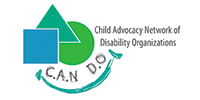What is AD/HD?
Attention-Deficit/Hyperactivity Disorder (AD/HD) is a condition that can makes it difficult for a child to sit still, control behavior, and pay attention. Although the child usually starts to experience these difficulties before the age of 7, the symptoms may only start getting noticed after the child is older. The direct cause for AD/HD is yet unknown, but researchers believe that some people with AD/HD do not have enough of certain chemicals (called neurotransmitters) in their brain, which help the brain control behavior.
The three main symptoms, of AD/HD are problems with paying attention, being very active (called hyperactivity), and acting before thinking (called impulsivity).
The three types of AD/HD, therefore, are: the inattentive type, (child finds it difficult to stay focused on a task or activity); the hyperactive-impulsive type, (child is very active and often acts without thinking); and the combined type, (child is inattentive, impulsive, and too active).
Inattentive type: Children with the inattentive type of AD/HD often experience difficulties with following instructions, focusing on play or school work. They get distracted easily and often lose things such as toys and books.
Hyperactive-impulsive type: Children with the hyperactive-impulsive type of AD/HD often find it difficult to sit still without fidgeting, or to play quietly. They are extremely active, run and climb all the time, and talk a lot, often interrupting while others talk, and do things without thinking. As they get older the level of activity might decrease.
Combined type: Children with the combined type of AD/HD have symptoms of both of the types described above. They have problems with paying attention, with hyperactivity, and with controlling their impulses. For children who have AD/HD, these behaviors are common, and can cause them problems at home and school. This makes them feel anxious, depressed and unsure of themselves, which are not symptoms of AD/HD but stem from having to face these constant problems at home and at school.
Signs and Diagnosis
A complete evaluation by a trained professional is the only way to know for sure if the child has AD/HD. It is also very important to find out if the child has other disabilities along with AD/HD, and to rule out other reasons that may be causing this behavior.
Treatment
There is no cure for ADHD; however, its symptoms can very effectively be managed. ADHD is best treated through a combination of behavioral therapy and medication.
The child’s family and teachers should find out more about AD/HD and learn how to help the child manage his or her behavior. The child would benefit from an educational program that fits the child’s individual needs. At home this can be assisted by creating a set daily routine for the child and by taking steps to reduce distractions such as the TV and Radio, while the child is studying.
Although medication does not cure ADHD it could be provided if parents and the doctor feel that this would help the child. Medication used to treat ADHD can include stimulants and non stimulants. About 60-70% of children with ADHD have responded positively to stimulant medication. Non-stimulant medication, whose effects can last up to 24 hours and include fewer side effects, were approved by the US Food and Drug Administration (FDA) in 2003 and have also proven to be effective in controlling ADHD symptoms.
A good treatment plan will include follow ups and changes made when appropriate.
Source:
http://www.help4adhd.org/WWK3
http://www.cdc.gov/ncbddd/adhd/treatment.html
